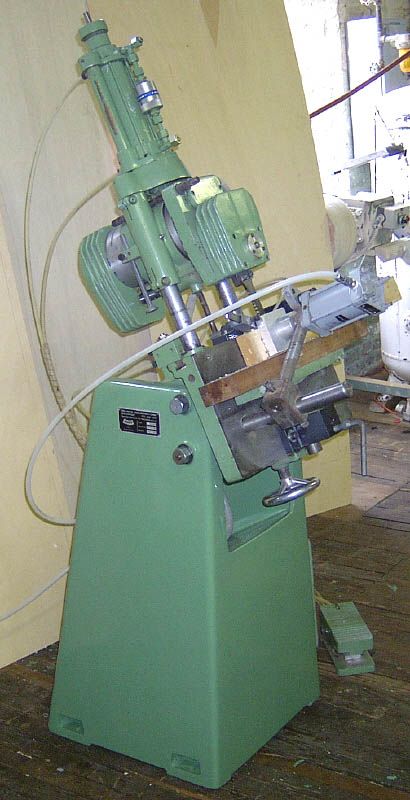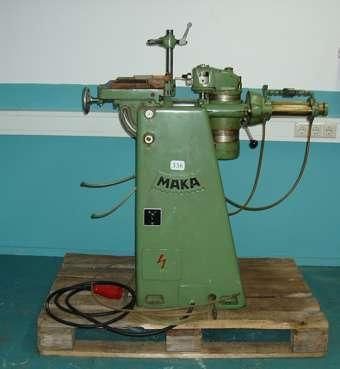Steve Voigt
Plastic
- Joined
- Jul 9, 2015
Hi all, first post here. In a past life I was a machinist, but these days I'm a maker of wooden planes. I'm looking for some design help here.
I'd like to devise some tooling for mortising my planes. Right now, I drill a few holes and then mortise out most of the waste with chisels, then finish with floats. So 95% of the work is done by hand. And I'm fine with that, but some day I'll be old, and I don't want to be pounding out all those mortises when I'm 70. And I wouldn't mind speeding things up as well.
The only machinery I've ever seen for this was devised by George Wilson, who is probably familiar to most here. There's a great video on the Fine Woodworking mag site, but it's paywalled. I took to a couple screenshots to illustrate.
George used a slotting head on a Bridgeport to make a big chisel go up and down.

He also had a saw that works a bit like a broach to cut away the abutments.

Unfortunately, a mill is out of the question for me. I don't have the space, the money, or even 220 v in my rental space. But what I'm thinking is, I don't need one, and I don't even need a motor. I just need something that can make a chisel-like cutter go up and down, with no play, and a handle that will multiply my force. Like on an arbor press, or an old manual metal shaper (that's how I got the idea). Then I need an xy-table beneath the cutter, with a mill vise mounted to it. I crank the handles on the table, make a cut, rinse and repeat.
I'm considering a couple options. One would be to modify a big arbor press. I'd probably need a 5-ton to have enough space. My main concern is taking all the play out of the press; another concern is how I'd mount my cutter, given that the rack is probably hardened.
Another option would be to fabricate a mechanism from linear rod, bushings, etc. Not sure if that would be better or worse.
I'd love to hear opinions on these options, or other suggestions if you've got em. I bet someone has a better idea than mine. Thanks in advance!
I'd like to devise some tooling for mortising my planes. Right now, I drill a few holes and then mortise out most of the waste with chisels, then finish with floats. So 95% of the work is done by hand. And I'm fine with that, but some day I'll be old, and I don't want to be pounding out all those mortises when I'm 70. And I wouldn't mind speeding things up as well.
The only machinery I've ever seen for this was devised by George Wilson, who is probably familiar to most here. There's a great video on the Fine Woodworking mag site, but it's paywalled. I took to a couple screenshots to illustrate.
George used a slotting head on a Bridgeport to make a big chisel go up and down.

He also had a saw that works a bit like a broach to cut away the abutments.

Unfortunately, a mill is out of the question for me. I don't have the space, the money, or even 220 v in my rental space. But what I'm thinking is, I don't need one, and I don't even need a motor. I just need something that can make a chisel-like cutter go up and down, with no play, and a handle that will multiply my force. Like on an arbor press, or an old manual metal shaper (that's how I got the idea). Then I need an xy-table beneath the cutter, with a mill vise mounted to it. I crank the handles on the table, make a cut, rinse and repeat.
I'm considering a couple options. One would be to modify a big arbor press. I'd probably need a 5-ton to have enough space. My main concern is taking all the play out of the press; another concern is how I'd mount my cutter, given that the rack is probably hardened.
Another option would be to fabricate a mechanism from linear rod, bushings, etc. Not sure if that would be better or worse.
I'd love to hear opinions on these options, or other suggestions if you've got em. I bet someone has a better idea than mine. Thanks in advance!









